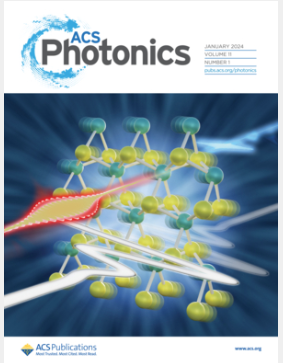Multi-Angle Focusing Metalens Designed via KAN Deep Learning for Expanding the Reception Field of MEMS LiDAR
IF 6.5
1区 物理与天体物理
Q1 MATERIALS SCIENCE, MULTIDISCIPLINARY
引用次数: 0
Abstract
The small receiving field of view of the detector often limits the scanning angle of the MEMS LiDAR. This paper designs and experimentally verifies a multiangle focusing metalens to tackle this challenge, which can focus light at various incident angles near its optical axis, unlike a conventional focusing metalens. To simplify the design process, we propose a novel neural network architecture that integrates Kolmogorov–Arnold Network (KAN) modules, Multilayer Perceptron (MLP) modules, Convolutional Neural Network (CNN) modules, and Transformer structures. This architecture enables accurate and rapid predictions of the phase and transmission efficiency for various meta-atoms at different incident angles, achieving prediction accuracies exceeding 95%. Considering fabrication constraints, the designed neural network can generate a library of 600 simple geometric meta-atoms in less than 1 min. Using this library, we simulated and experimentally validated the multiangle focusing metalens. Results show that with a diameter of 2 mm and a focal length of 1 mm, the metalens can effectively focus light at incident angles from 0 to 30°, with a maximum focal length shift of only 20 μm, one-tenth of that of conventional metalenses with the same parameters. This demonstrates that the designed metalens can significantly enhance the receiving field of view for MEMS LiDAR detectors and similar systems.

利用KAN深度学习设计多角度聚焦超透镜,扩大MEMS激光雷达的接收范围
探测器接收视场小,往往限制了MEMS激光雷达的扫描角度。为了解决这一难题,本文设计并实验验证了一种多角度聚焦超透镜,与传统聚焦超透镜不同,它可以在其光轴附近以不同的入射角聚焦光。为了简化设计过程,我们提出了一种新的神经网络架构,它集成了Kolmogorov-Arnold网络(KAN)模块、多层感知器(MLP)模块、卷积神经网络(CNN)模块和变压器结构。该结构能够准确、快速地预测不同入射角下各种元原子的相位和传输效率,预测精度超过95%。考虑到制作条件的限制,所设计的神经网络可以在不到1 min的时间内生成600个简单几何元原子库。利用该库,我们对多角度聚焦超构透镜进行了仿真和实验验证。结果表明,当超透镜直径为2 mm,焦距为1 mm时,其对焦角度为0 ~ 30°,最大焦距位移仅为20 μm,为相同参数下常规超透镜的1 / 10。这表明所设计的超透镜可以显著增强MEMS激光雷达探测器和类似系统的接收视场。
本文章由计算机程序翻译,如有差异,请以英文原文为准。
求助全文
约1分钟内获得全文
求助全文
来源期刊

ACS Photonics
NANOSCIENCE & NANOTECHNOLOGY-MATERIALS SCIENCE, MULTIDISCIPLINARY
CiteScore
11.90
自引率
5.70%
发文量
438
审稿时长
2.3 months
期刊介绍:
Published as soon as accepted and summarized in monthly issues, ACS Photonics will publish Research Articles, Letters, Perspectives, and Reviews, to encompass the full scope of published research in this field.
 求助内容:
求助内容: 应助结果提醒方式:
应助结果提醒方式:


